John McCallum, Canada’s Ambassador to China, dropped by Saint Mary's Monday morning to deliver his message that young people, especially students, would benefit from spending time in China.
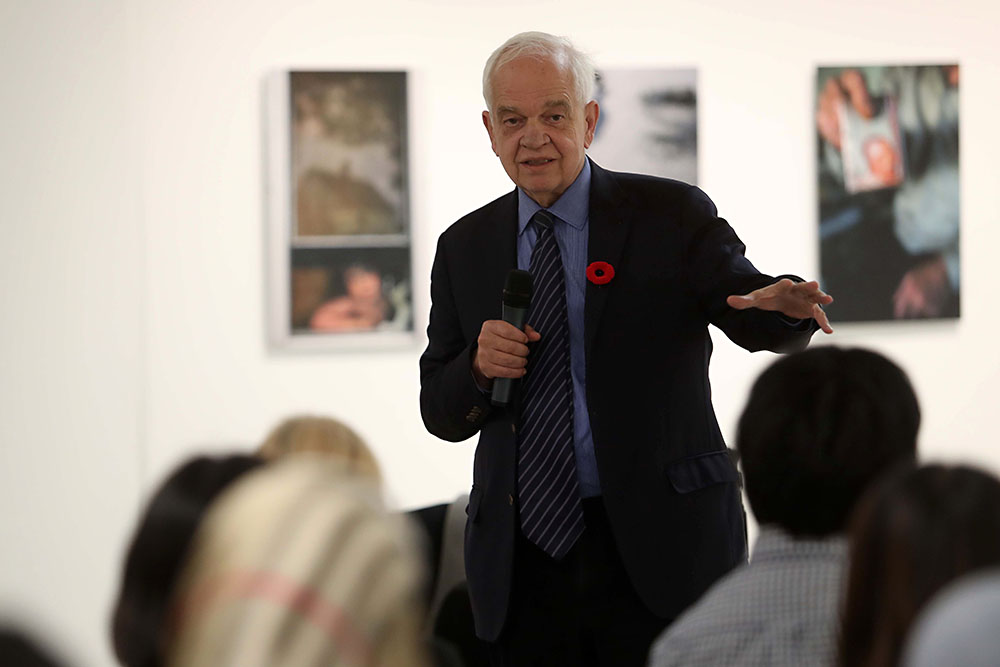


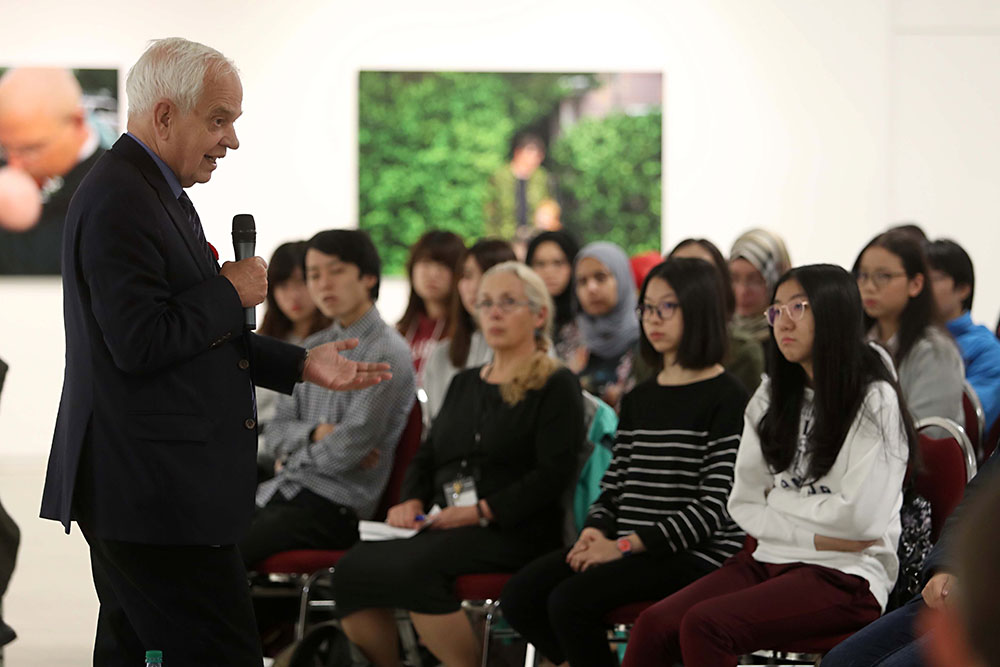
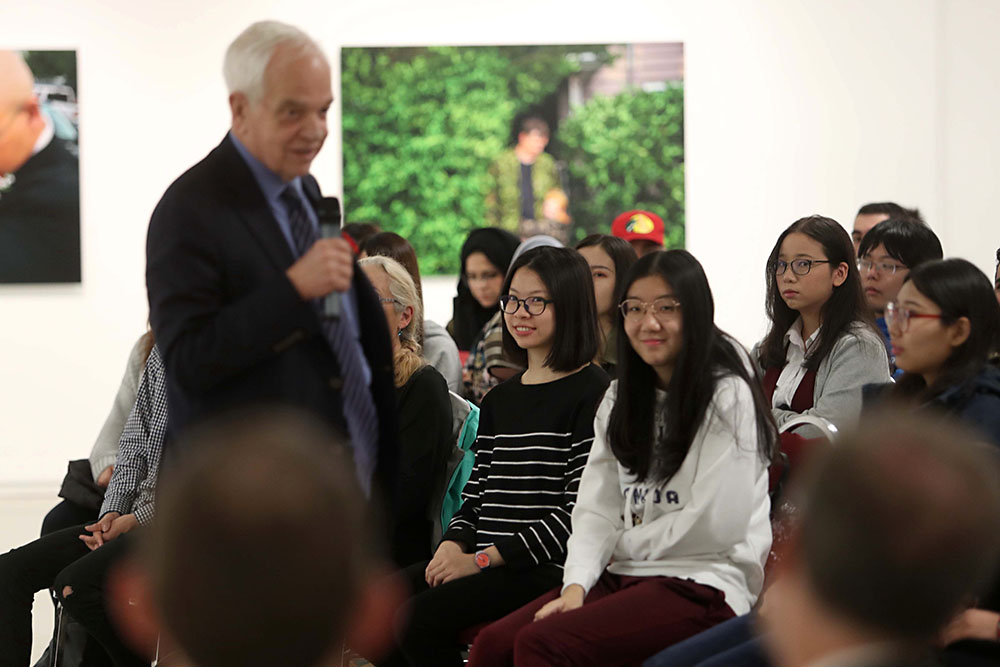

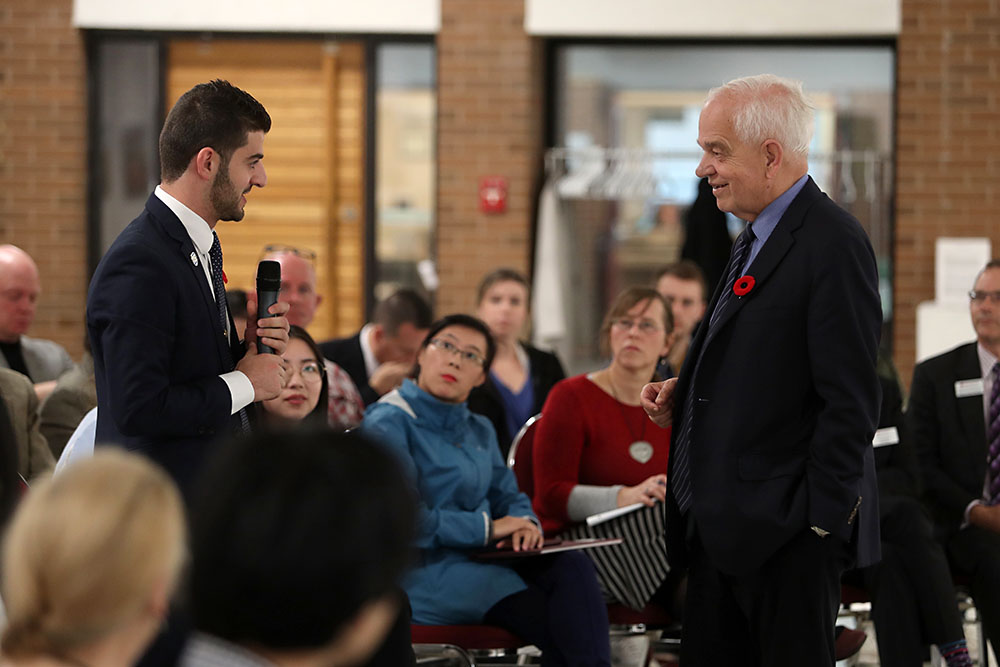


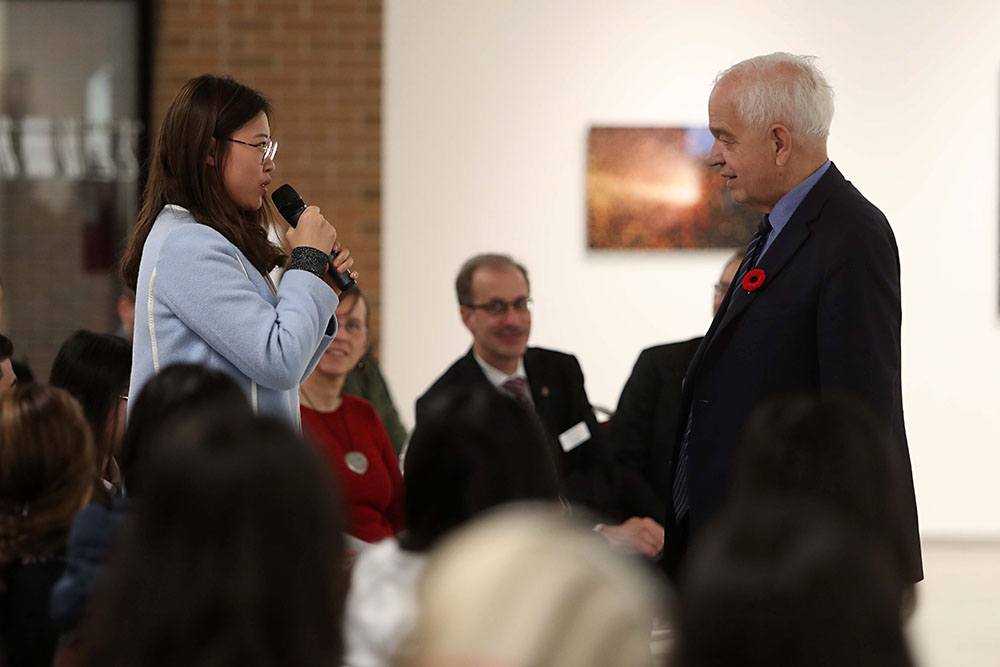
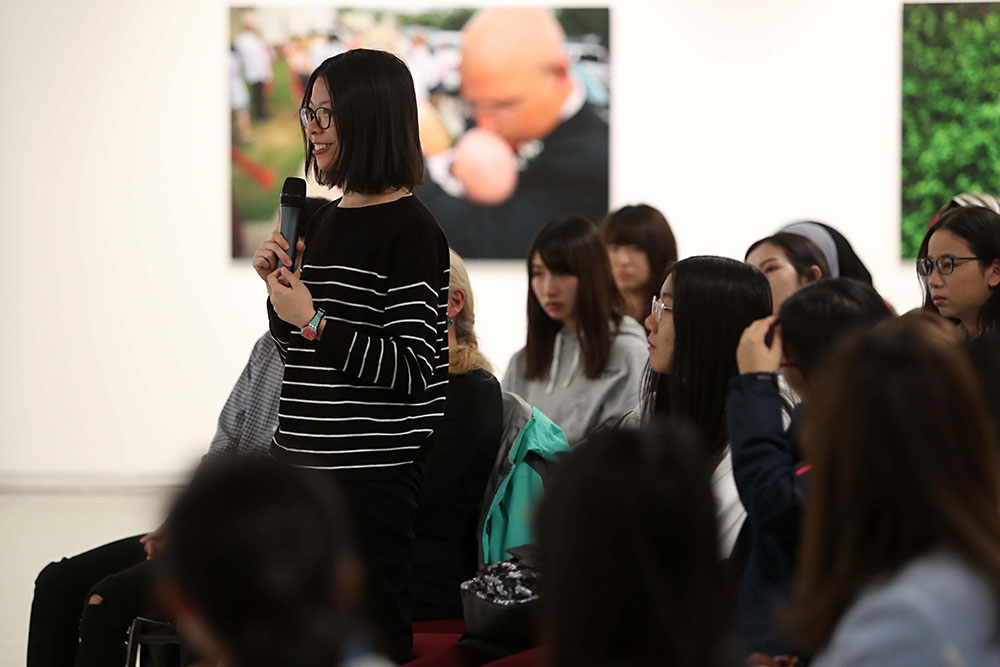
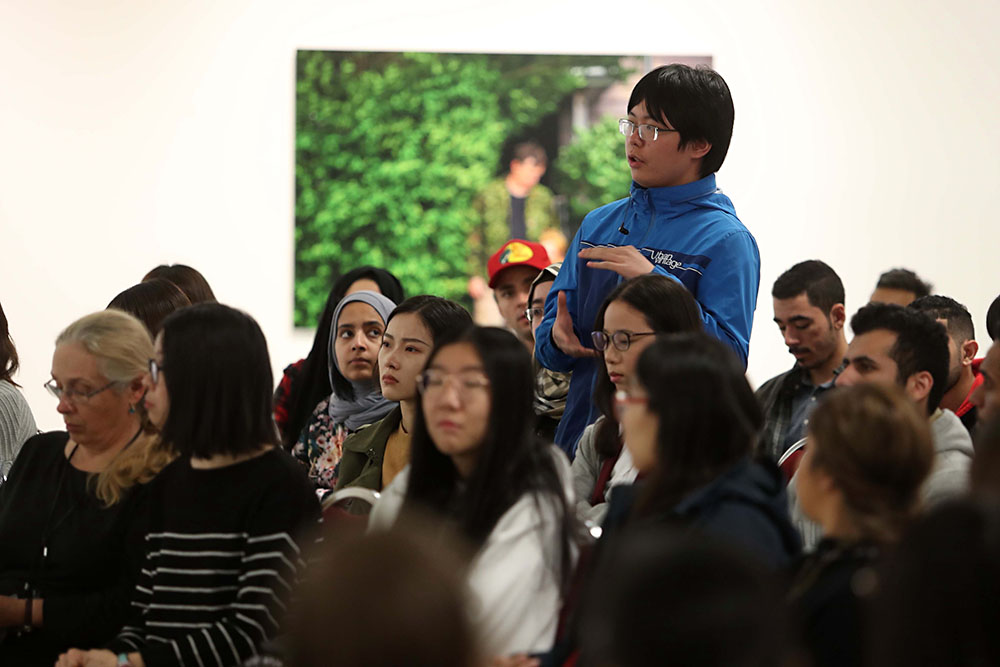
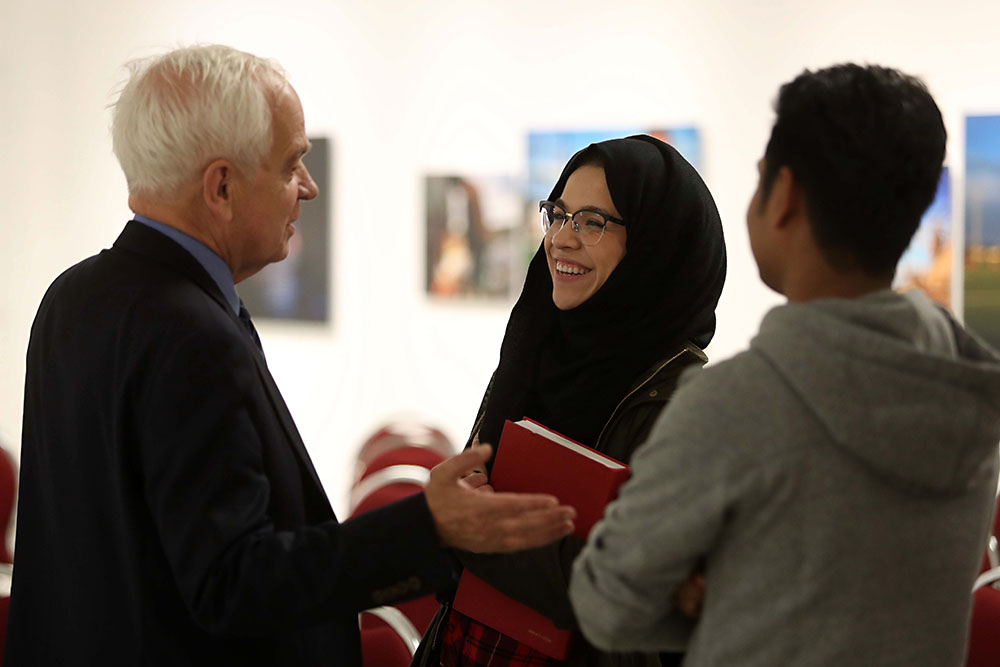

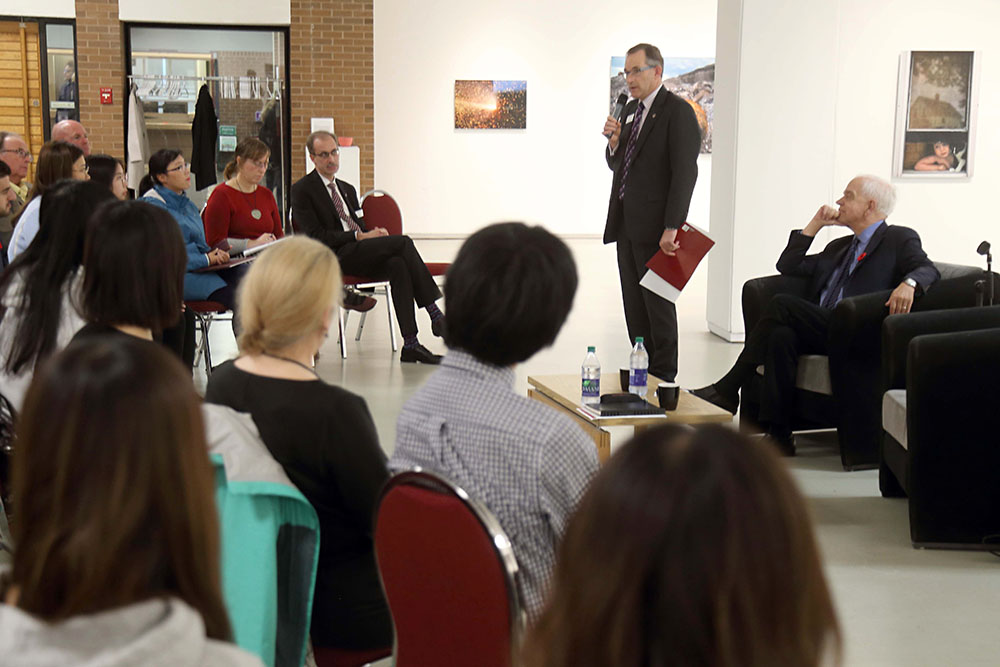

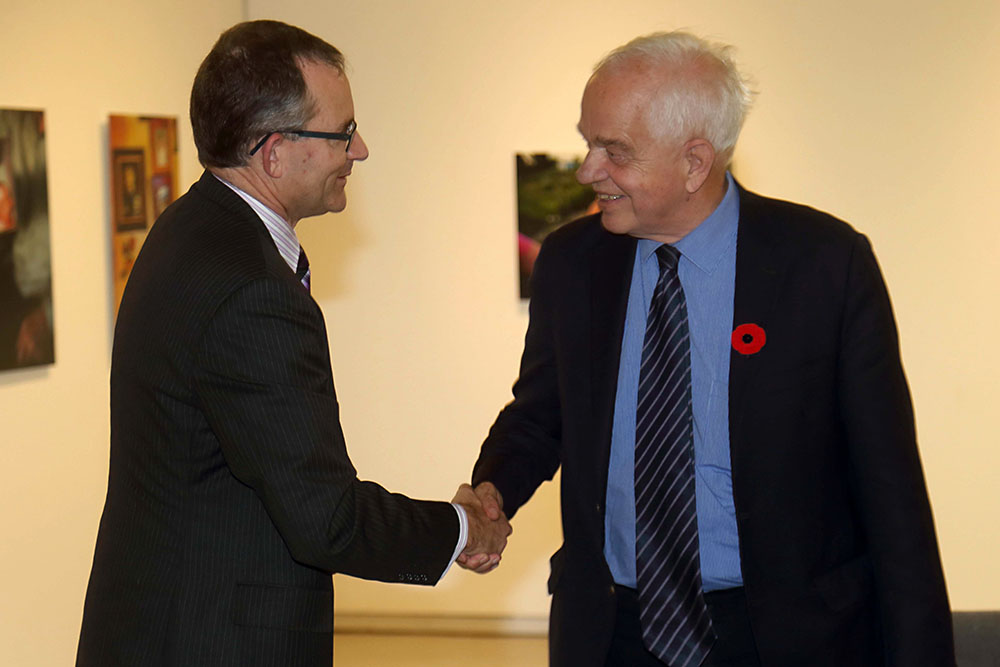
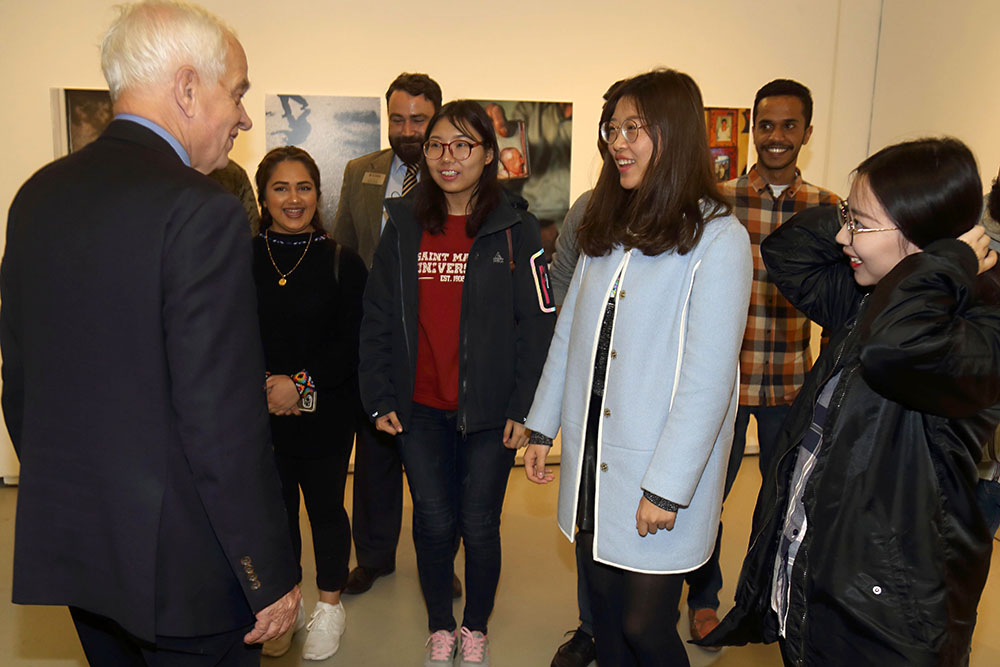
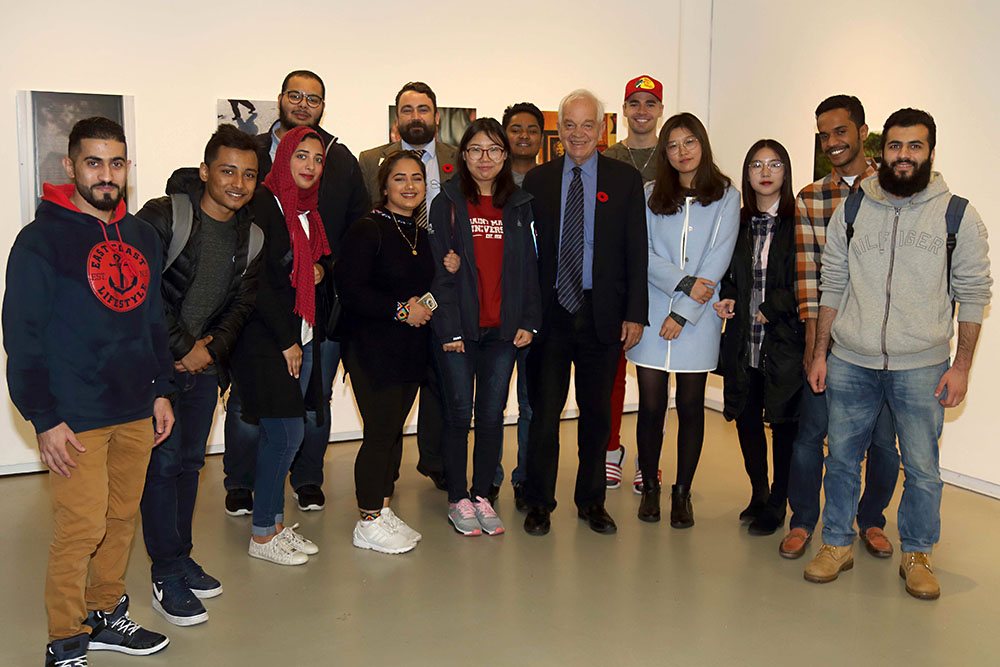
A new support for Nova Scotians trying to navigate the legal system is now available thanks to the efforts of recent Saint Mary’s University Computer Science graduate Kislay Trivedi.
The Small Claims Court App is designed to assist people representing themselves and considering an action in Small Claims Court. Available on the Legal Information Society of Nova Scotia (LISNS) website, the app provides clear and easy-to-understand legal information for self-represented individuals navigating the Small Claims Court and processes.
“Our goal at LISNS is that individuals dealing with a real or potential legal issue will feel confident and informed through accessing our many offerings, including our telephone help line, online resources and innovative apps, such as the Small Claims Court App,” says LISNS Executive Director Heather de Berdt Romilly. “Research shows that when clearly explained legal information is accessible at an early stage it helps address potential litigation problem areas in a significant majority of cases.”
Gavin Giles, Q.C., the Chief Adjudicator of the Small Claims Court, recognized a need to better assist the many self-represented individuals and reached out to LISNS for its expertise and assistance. With contributions from Adjudicators Eric Slone and W. Augustus Richardson, LISNS turned to Saint Mary’s University alumnus Kislav Trivedi to develop the app.
The app will be part of a pilot project taking place in November at the Small Claims Court in Halifax. During November, law school students will be available at the courthouse to provide in-person assistance to self-represented litigants. The pilot will help identify the benefit of in-person assistance to using the Small Claims Court app and the findings will inform how public navigator programs are developed for other areas.

2016-2017 Dean’s List students
The Faculty of Science and the Alumni Office recently celebrated the outstanding academic achievements of 2016-2017 Dean’s List students at a reception in McNally Theatre Auditorium.
This year’s guest speaker was Saint Mary’s University alumnus Greg Campbell, who completed his Bachelor of Science in Biology in 1976. Greg shared lessons he learned as a science student and through his career in corporate finance. He stressed the importance of building strong written communication skills, noting that “mastery of the written word is what will separate a good technical specialist from a great one.”
To qualify for the Dean’s List, science students must have achieved a grade point average of at least 3.67 in the previous academic year.

Greg Campbell, BSc in Biology ’76

2017 Dean's List students with Dean of Arts Margaret MacDonald and Eric Miller (center front)

Eric Miller
Each year, Saint Mary's recognizes Arts students with high academic standing by placing them on the Dean’s List and presenting them with a symbolic key.
To qualify for the Dean’s List, students must have taken at least 30-credit hours during the academic year and achieved a grade point average of at least 3.67. Dean’s List standing is noted on student transcripts and remain part of their record.
At this year's ceremony, held Thursday, October 26, global polictical consultant Eric Miller BA'93 addressed the students. Miller is president and founder of the Rideau Potomac Strategy Group, and a fellow at the Wilson Center.

Scott Gray
Saint Mary’s University is pleased to announce the appointment of Scott Gray to the position of director, athletics and recreation at Saint Mary’s University, effective November 6, 2017.
“I am very happy to announce the appointment of Scott Gray as our new director of athletics and recreation,” said Saint Mary’s University President Dr. Robert Summerby-Murray. “Scott is a seasoned athletics and recreation administrator who brings a holistic approach to athletics and recreation to our campus. He understands the important role that sport, recreation, health and wellness play in student life at Saint Mary’s, and he will be an excellent support for our students, student-athletes, coaches, faculty and staff.”
Gray joins the university from Sault College of Applied Arts and Technology, where he led the athletics department and managed the college’s recreation facility since 2006. In that role he was responsible for the college’s various athletic programs including varsity sport, club sport, campus recreation and community ventures.
“My primary focus is on student engagement and student involvement in athletics and recreation on campus,” said Gray. “I want to build on the proud traditions of the Huskies and also continue to promote our facilities as a place for recreation, wellness and community connection.”
Gray has served as a head coach and assistant coach in various sports at the recreational, collegiate and university level. He has assumed many leadership positions within both the Canadian Collegiate Athletic Association (CCAA) and the Ontario Collegiate Athletic Association (OCAA). Most recently, he served as president of the OCAA from 2014 to 2017.
Gray has also been an active athletics and recreation leader in his local community. He has served as the vice-president: director of operations, and a founding member, of the Sault Minor Football Association. He has also served in leadership roles in the community supporting curling, cross country and women’s volleyball.
Gray is a graduate of Queen’s University with a Bachelor of Arts and a Bachelor of Physical Education. As a student at Queen’s, he was also an Academic All Canadian (football) and Vanier Cup Champion.
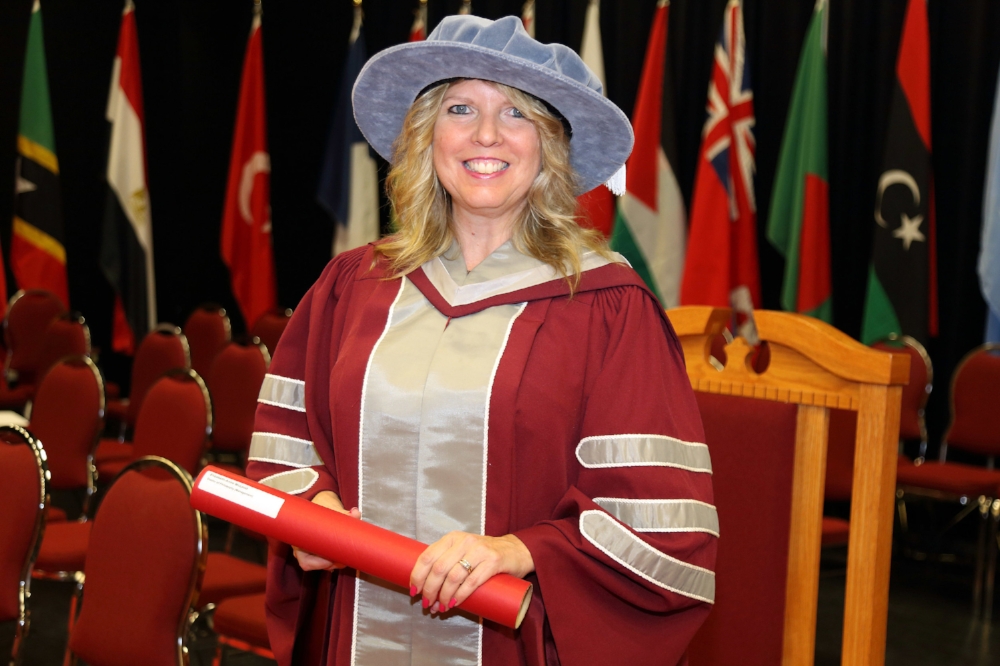
“Balance is key,” says Elizabeth McLeod, about managing her life while earning her Doctor of Philosophy in Business Administration (Management) after 10 years of study and research.
Pursuing her latest degree and holding a full-time job kept Dr. McLeod juggling school, work, and home life, and “keeping all the balls in the air at once” was a challenge. A PhD typically takes four to five years to complete, and even longer on a part-time basis. The first two years consist of classes, followed by comprehensive exams, and then an extensive research project. During those years, vacations from her job were spent studying for exams, conducting research, and writing.
The epitome of a committed Santamarian, Dr. McLeod not only completed her Bachelor of Science in Chemistry and Master of Business Administration at Saint Mary’s, she has worked in the Faculty of Science for 27 years. Recent students will know her as a Lab Technician in Chemistry, but Dr. McLeod has also been a Neutron Activation Technician, a WHMIS Instructor, and has held roles in the Dean of Science Office and Co-operative Education.
Her PhD dissertation, which she successfully defended in June, is titled “The Role of Privacy Management in Brand Protection and Brand Value.” Her work focused on researching privacy issues and concerns with the use of a growing number of invasive technologies, and how these concerns can affect a brand’s value. Her research confirms that privacy management plays a significant role in brand protection and brand value.
Dr. McLeod is excited about completing her doctorate and she is grateful for the support she received throughout her degree from her supervisor Dr. Dawn Jutla, her PhD Director Dr. Albert Mills, and from her family, friends, and colleagues.
“Dr. McLeod’s dissertation provides a seminal publication empirically connecting organizational privacy behaviors, brand protection, and brand value,” says her supervisor Dr. Dawn Jutla.
For her research Dr. McLeod used a preliminary survey of privacy and security experts to discover what their top concerns are about privacy. The findings informed a formal survey instrument, which included both new and existing scales for the constructs that were later validated. This work contributes a new model that connects privacy practices, experienced harms, privacy concerns, brand protection, and brand value to management, management information systems, marketing and risk literatures. “Empirical testing of the hypotheses has confirmed that privacy management plays a significant role in brand protection and brand value,” writes Dr. McLeod in her abstract.
Saint Mary’s is a family affair for the McLeods. Elizabeth’s husband Ron is a Saint Mary’s part-time professor, and their two children have spent time on campus as well. Their son Connor received the Gold Medal when graduating with his Diploma of Engineering at Saint Mary’s, and their daughter Kaleigh started a Bachelor of Science this fall.
“Elizabeth has been on life’s journey, holding down a full-time job, raising teenage children, surviving car accidents, burying loved ones, supporting a creative entrepreneur-husband, and celebrating 10 birthdays while doing her dissertation,” said Dr. Jutla.
“Her story is one of perseverance producing great work with support from her village—the good people at Saint Mary’s University, especially Albert Mills, PhD Director, who believed in her too, and fellow PhD graduates like Anthony Yue. We are all so very proud of her!”

Ray MacNeil
Saint Mary’s University is pleased to announce that Ray MacNeil has joined the university as our new CLARI Network Manager. Ray is now finishing his second-week on campus and is a welcome addition to Saint Mary’s and the CLARI network.
“The CLARI facility here at Saint Mary’s is the heart of the province-wide network,” Dr. Adam J. Sarty, Associate Vice-President, Research and Dean of the Faculty of Graduate Studies and Research. “Ray brings decades of experience working in highly productive and collaborative environments to CLARI, and is the right person at the helm as we expand the reach of our change lab.”
A twenty-six-year veteran of the Nova Scotia public service, Ray has spent the last ten years of his career exploring advances in the complexity sciences and their application to improved public services. His work in this area has resulted in consulting requests with a number of other governments and institutions.
In 2016, Ray was honored with the Nova Scotia Public Servant of the Year Award by the Springtide Collective. In that same year, he retired from the public service and created Organizational Dynamics, a consulting firm dedicated to complexity informed management practices. Ray has remained a regular presenter on issues related to the management and measurement of public services.
CLARI is a cross-province, multi-post-secondary education partnership offering academic and research expertise, designated spaces and communications technology to support Nova Scotia communities in applying stakeholder collaboration techniques and action research toward addressing social and economic challenges.
CLARI’s hub-and-spoke style network spans the province, combining the talents and resources of its six founding partner universities and the Nova Scotia Community College’s 13 campuses. Through CLARI, partners can assist communities in all parts of the province in developing social and economic improvement projects while providing enhanced learning opportunities for students.

CorwinTrottier
Congratulations to Master of Science in Applied Science candidate Corwin Trottier, recipient of a prestigious $5000 Mineralogical Association of Canada (MAC) Foundation Scholarship.
Corwin Trottier is currently pursuing a Master of Science in Applied Science under the supervision of geology professor Dr. Jacob Hanley. He holds not one, but two undergraduate degrees from Saint Mary’s University: a Bachelor of Science in Physics and a BSc in Geology.
Trottier’s MSc thesis builds on his summer research with Dr. Hanley and Dr. Georgia Pe-Piper, where he studied samples from the Great Bear magmatic zone (GBMZ) in the Northwest Territories. These samples contain polymetallic “five-element” (Ni-Co-As-Ag-Bi) mineralization, which occur as structurally controlled veins within lightly metamorphosed volcanic and sedimentary host rocks.
“Noteworthy recent research on five-element veins have focused on several European deposits, but GBMZ deposits remain untouched by modern analytical techniques,” writes Trottier in his thesis rationale.
Trottier’s research examines 60 rock samples that had been collected in the 1960s from the Eldorado Mine, which operated from 1933 to 1982, and stored at the Department of Natural Resources (DNR) division of the Geological Survey of Canada (GSC) in Ottawa. His objective is to advance the understanding of the ores at Eldorado Mine and similar five-element veins using modern analytical tools.
“Mr. Trottier is laying new ground in our understanding of uranium-silver deposits in Canada and abroad,” said Dr. Hanley. “I have been greatly impressed by his worth ethic and care in conducting this important research.”
Previous studies in the GBMZ have not quantified the metals in ore fluids, nor have they captured trace element and stable isotope chemistry at the scale of individual vein stages. As a result, current models have not been able to explain the source of uranium and other metals at Eldorado from a geochemical perspective.
“Final results will be compared to those of previous studies in the GBMZ and other five-element occurrences around the East Arm of Great Slave Lake, NWT,” writes Trottier. “This comparison will provide insight into the potential genetic relationship between similar deposit styles of variable ore grade at local and regional scales. The expected outcome will bring a better understanding of how ore metals are distributed in similarly complex vein deposits.”
The Mineralogical Association of Canada awards two $5000 scholarships yearly, one to a student enrolled in an MSc program and one to a student in a Ph.D. program. The applicable fields of study are: Mineralogy, Crystallography, Geochemistry, Mineral deposits and Petrology.

Dr. Rowland Marshall and Taylor Lynk
Saint Mary’s University is pleased to announce that Taylor Lynk, a fourth year Bachelor of Science student, is the winner of the inaugural Dr. Rowland Marshall Prize in the Science of New Energy.
Lynk, from Marion Bridge in Cape Breton, will complete her B.Sc. with Honours in Chemistry degree with a Diploma in Forensic Science this year. She is working on her honours project with the supervision of Dr. Christa Brosseau.
The prize will be presented annually to a full-time student enrolled in the Faculty of Science at Saint Mary’s University, for a paper on something new and innovative related to the study of new energy – with particular interest in renewable resources and energy. The award is given for a completed paper or it can be used as seed funding for a thesis. The concept must be explained in fewer than 500 words, supported by images or diagrams as appropriate. When selecting a recipient, the judges consider three variables:
“Congratulations to Taylor Lynk on receiving the 2017 Prize in the Science of New Energy for her research and paper. Taylor's attainment is specially significant in that this is the first award of this particular new prize in the Science Faculty here at Saint Mary's. Well done, Taylor,” said Dr. Marshall.
The winning paper explores a way to use green materials to synthesize nanomaterials in an environmentally benign way to allow for continued growth of the nanotechnology field.
Working with fellow students in Dr. Brosseau’s lab, she tested using avocado pit extract as an alternative to harsh chemical reducing and capping agents commonly used in noble metal nanoparticle synthesis.
Lynk explained that using avocado pits was an idea conceived by herself and fellow researcher, Osai Clarke, when they were inspired to make use of the waste from a fellow student's lunch. “The avocado pit is a byproduct of avocado processing, so this project could potentially be a good solution for diverting some of the waste generated from avocado consumption,” she said.
She found that this renewable waste product demonstrated superior performance over traditional counterparts, which is a key step in implementing the replacement of chemical feedstocks with sustainable options. This method could be valuable for future large-scale plasmonic applications such as in plasmon-enhanced solar cell technology.
Along with the Dr. Rowland Marshall prize, Lynk has maintained a renewable entrance scholarship with academic achievement increases over two years. She won “Best Undergraduate Oral Presentation in Analytical Chemistry” at the 2017 Science Atlantic Chemistry Conference (ChemCon), two Department awards for “Scholarly Achievements and Academic Excellence in Chemistry,” and has been on the Dean’s List since her first year at Saint Mary’s.
Dr. Rowland Marshall’s connection to Saint Mary’s University spans 55 years. Along with his late wife Margó Takacs Marshall, the former philosophy professor has established a variety of student awards. In 2017, on Canada’s 150th anniversary, he is happy to be still involved in the university’s evolution and success.
Back-to-back national championships were honoured this year as two Saint Mary's University football teams were inducted into the Saint Mary's University Sport Hall of Fame, October 15.
In 2001, the Saint Mary's Huskies knew they had a special football team. The team went on a blistering 11-0 run that season, outscoring their regular league opposition 480-35 and post- season opponents 128-31. During this dominant season, the team did not give up a single rushing touchdown.

Blake Nill, head coach of the Huskies 1998 - 2005 commented, "What makes this time of my career so special was not just the on-field accomplishments by an outstanding group of athletes and coaches but how we were viewed off field. There was a Huskies presence throughout campus, the city of Halifax and the province. The 2001 and 2002 editions of Huskies Football were teams that truly represented the Maritimes, their pride, and the long standing traditions of this community".
Then assistant coach Steve Sumarah said that he considered the 2001 Huskies "the most dominant team in the history of Canadian university football." The team went on to defeat the Laval Rouge et Or 48-8 in the Atlantic Bowl and then the Manitoba Bisons 42-16 in the Vanier Cup game where they became national champions.
The 2002 season proved more challenging for the defending Vanier Cup Champions. Losing to both Acadia Axemen and St. Francis Xavier X-Men, the team went on to post a 6-2 regular season record, tying St. Francis Xavier for top spot in the conference but claiming the conference's top spot due to a greater point spread. The Huskies went on to defeat St. Francis Xavier 63-14 for the Atlantic Championship.
Led by quarterback Steve Panella, who would be named the Vanier Cup's Most Valuable Player, Saint Mary's would go to defeat their dogged rivals the Saskatchewan Huskies 33-21 in the national championships to become the first repeat winner of the Vanier Cup in 25 years.
The 2001 and 2002 Saint Mary's Huskies championship football teams were inducted into the Saint Mary's University Sport Hall of Fame during Homecoming Weekend, October 15th.

Damon Kwame Mason, Darrell Maxwell, Bob Dawson, Percy Paris, Willie O'Ree
In 1970, Bob Dawson, Percy Paris, and Darrell Maxwell formed the first all-black line on a Canadian university hockey team. On October 12, the historic linemates revisited their alma mater for an exciting and moving evening looking at the history—and future—of black athletes in hockey, in Nova Scotia and internationally.
The evening included a screening of Soul on Ice: Past, Present, Future, a feature-length documentary about the history, current state of play, and prospects of black hockey players. Filmmaker Damon Kwame Mason was in attendance, along with Willie O’Ree, the first black player in the NHL and currently the league’s Diversity Ambassador.
Following the screening, the former players engaged in a panel discussion, moderated by former CBC sports broadcaster Bruce Rainnie, and shared stories of their youth and early athletic careers, and engaged with contemporary questions around politics, race, and sport.
The event received generous support from the Province of Nova Scotia 150 Forward Fund and, at Saint Mary’s University, the Office of the President, Alumni Affairs, the Department of History, the Centre for the Study of Sport and Health, the Centre for the Interdisciplinary Study of Culture, and the Atlantic Canada Studies Program.